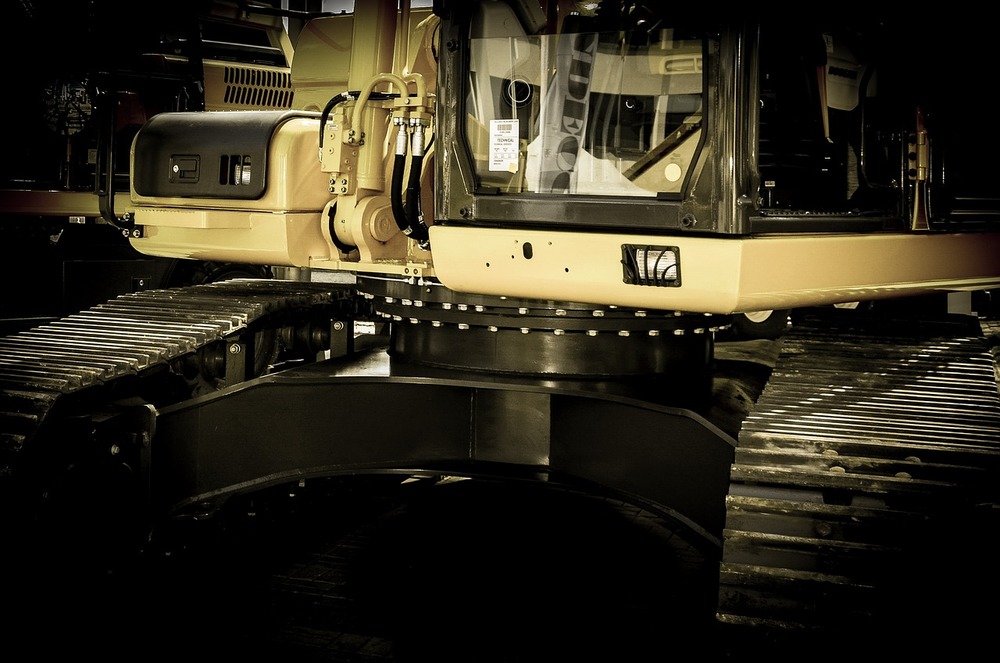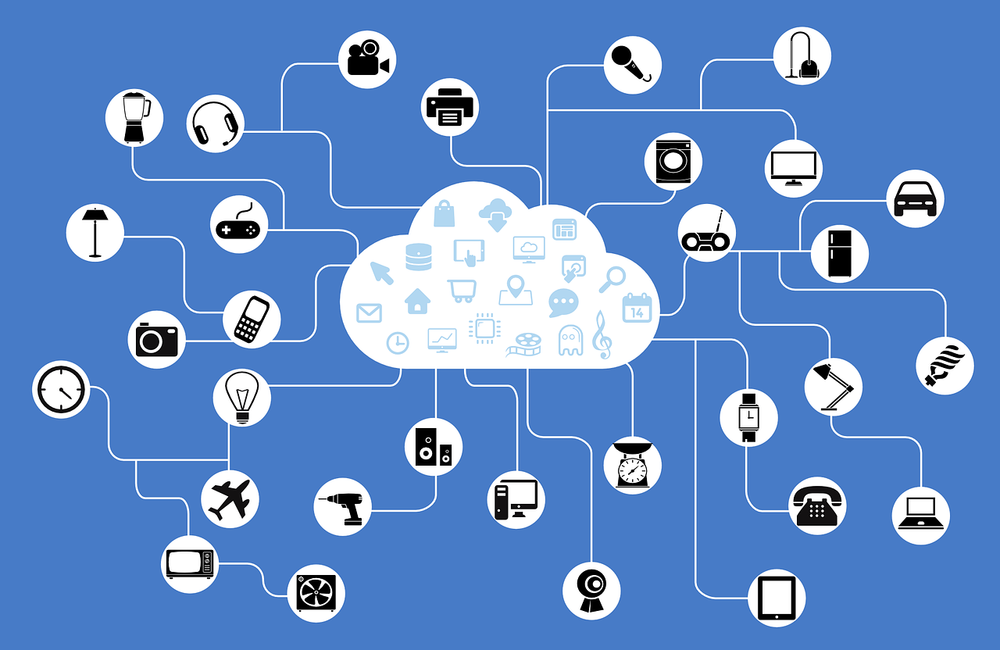This article is part of a blog series, in which we discuss how IoT and robotics will grow, as well as the benefits and challenges of using them in the construction industry.
Internet-connected devices in the construction industry are known as IoT (Internet of Things).
The Insight Partners research report says that the size of the IoT market in construction will grow from $611 Billion in 2023 to $3,967 billion by 2030. An annual growth rate of 30.6%.
The Grand View Research report valued the global construction robotics market at $1,029 million in 2022, and is expected to grow at an annual rate of 17.5% from 2023 to 2030 to reach $3,543 million by 2030.
Robotics is everywhere and is used in various applications in the construction industry to perform repetitive and mundane tasks to:
Companies in the construction industry have started to embrace the IoT solutions.
Connecting and coupling robots with sensors, communication devices, and wearables to the cloud and analytics engines, is boosting automation in construction organizations of all sizes. The implementation of the IoT solutions helps to get real-time information, facilitating the decision-making process.
Companies using IoT solutions in the construction industry can transform their businesses.

Developing urbanization worldwide contributes to an indisputable prospect for the growth of robotics in the construction industry. Here are some ideas where robots can be used.
Here are some examples of innovative robots that have been developed in the recent past:
Washington State University
The University in collaboration with the Trimble Technology lab is developing a program - the "Cougar Cage" fund - that matches private donors with worthwhile projects pitched by students, faculty, and staff.
Nestor Perez-Arancibia is developing bee-sized robots by creating a hybrid battery that uses both electricity and liquid fuel.
He plans to develop a swarm of robotic insects, with 50 of them able to crawl and the other 50 able to fly.
Vahid Vahdat and Maryam Mansoori, professors of design and construction, are developing robotic additive manufacturing to allow students to research and experiment with advanced 3D printing.
Robots, artificial intelligence, and automation will change the way architecture works. Vahdat and Mansoori want their students to be prepared to enter a workforce focused on safe and sustainable ways of building.
Fastbrick Robotics
This company is constructing eight houses in Western Australia, by using its Hadrian X robot which works fast and accurately.
Advanced Robotics Construction (ACR)
This Australian company developed TyBOT and IronBOT to carry out the repetitive and backbreaking tasks of rebar installation using artificial intelligence and robot vision. The robots are working consistently and predictably, much quicker than the traditional methods.
ACR will provide its robotic services for the highway project in Florida for $598 million, 15 to 20 years sooner than with a traditional method . By late 2022, the project connected US 19 to I-275 and the Bayside Bridge to I-275 in Pinellas County. It gives drivers a tolled option to commute several miles up and over dozens of traffic signals.
The high initial investment in purchasing and maintaining robots should be mentioned, as it can deter a lot of companies from entering the market.
Robots in the construction industry reduce repetitive and mundane tasks in a controlled environment, to automate, and streamline your processes, making them more accurate.

The acronym APPRECIATE will help you to memorize the top use cases for IoT for getting the best Return on Investment when choosing what to implement in your business.
IoT will allow you to monitor your assets by:
IoT in inventory management is very useful as you can:
Companies in the construction industry tend to specialize in one type of project: residential, commercial, or infrastructure.
By using the IoT, and incorporating sensors on different internet-connected devices you will be able to understand your processes better and open the possibilities to diversify your offering by:
With IoT devices, you can evaluate different activities, environments, or operational performance, and analyze the data to generate useful observations, helping you to prepare custom messages for individual customers' needs.
Real-time information collected from processes, devices, or employees via sensors has revolutionized design-process management and site management by providing visibility.
Engineers and Architects using Building Information Modeling (BIM) software create digital structures before the asset is physically built. Reusing previous project data helps them to detect and reduce issues during the initial design phases and eliminate expensive reworks during the construction phase.
These data sources include enterprise resource planning systems, emails, RFIDs, 3D models, and other construction-related information. Other data can be collected such as weather, labor, traffic, and non-integrated systems within the general contractor and subcontractor organizations.
IoT plays an important role in listening to clients and improving the customer experience. You can use adequate devices to collect client data from multiple points of contact. This data is consolidated, analyzed, and personalized to satisfy your client’s needs.
A building’s entire lifecycle is responsible for approximately 39% of global energy related to CO2 emissions being wasted due to building mismanagement. The construction industry is also well known for its poor records on health and safety issues
In the construction industry, IoT solutions can transform prefabrication and modularisation into smart factories. Process workflows, software, data, and physical equipment will have to be integrated to determine the key data points that will drive optimization and then deploy sensors, cameras, drones, etc. to collect data.
IoT-enabled devices will deliver real-time data on the performance of the production process, using the cloud to minimize the need for data to be processed in a remote data center, and AI to transform big data into meaningful observations.
Improving productivity in the construction industry worldwide is a priority as poor productivity is a compelling threat, due to the increase in global urbanization.
The implementation of IoT technologies will help the industry to address these challenges.
Bouygues Construction Matériel, a subsidiary of the global construction group Bouygues Construction, has implemented an asset-tracking product that ensures construction sites have compliant equipment. The company has deployed long-range and low-power connectivity with sensors on more than 20,000 pieces of equipment across construction sites in France. Each site gains insight into productivity by tracking geolocation to optimize equipment use and monitor the state of site equipment.
According to the Forbes Insights survey, a majority of executives report that IoT is creating new business lines. Construction companies can share and reuse data from previous projects to provide their clients with innovative ways of engaging them in providing value-added services.
The digitalization of the construction industry is a major opportunity for investors, innovators, thought leaders, and professionals.
In architecture, urban planning, and design, the increasing digitalization of human interactions with machines through the use of the internet will exponentially increase the volume of construction output.
IoT will help to find new business opportunities to sustain growth by simplifying complex object manufacturing issues to uncomplicated design alterations.
Cloud-based collaboration solutions allow all stakeholders in a construction project to easily exchange information with each other. It helps to:
All stakeholders of the project share the same data, so they work from the same page with one single source truth.
Using a common data model in the cloud enables data to be converted into actionable information and applied to other solutions.
Smart devices and equipment capable of communicating with each other in real-time about potential hazards, malfunctions, and even job-site challenges, without the need for human intervention, increase the health and safety of your workforce.
IoT applications reduce costly human error, improving health and safety on-site 24/7.
For example, vehicles on the job site can be equipped with onboard sensors to detect hazards and other environmental conditions and proactively alert drivers via networked applications. We could even imagine that IoT-enabled equipment could shut down operations completely if emergency safety measures are needed.

You may think that robots will replace humans and that this is bad for employment, but we believe that new skills will be developed such as:
Actual labor can concentrate their effort on monitoring robots.
The trend of digitization, automation, and the increased use of the Internet of Things have boosted the Industrial Revolution 4.0. The construction industry is reluctant to incorporate these innovative technologies into its common practices, despite the drastic developments demonstrated by other industries.
The Fourth Industrial Revolution is built upon the Digital Revolution where technology and people are connected.
Construction organizations that are using robots and IoT have:
Construction firms using robots and applying IoT technology will get a serious competitive edge:
Driving Vision's technology appraisal looks at the best way to insert new technology in your workflows and how to move your organization to cloud computing so you can open new possibilities for your daily planning tasks and make sure your data never leaves the optimally secured data center.
A Driving Vision expert will conduct the interviews online and will discuss the report and our findings with you. Together we will decide the best way to implement the solutions at your pace and according to your budget.
Implementing BIM can be daunting, but Driving Vision is here to help you at the pace you are comfortable with. Get started by getting in touch now
You minimise the level of investment required to implement BIM as we share the Research and Development costs with other client
You increase your revenue by staying ahead of the competition as BIM best practices allows you to win bigger and more rewarding projects.
You reduce your costs, more than our fees cost you, by decreasing potential litigations, rework, and errors and omissions
